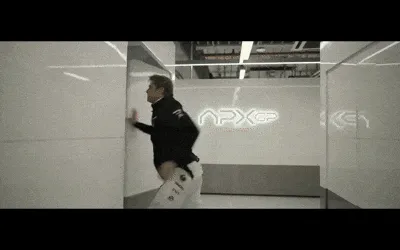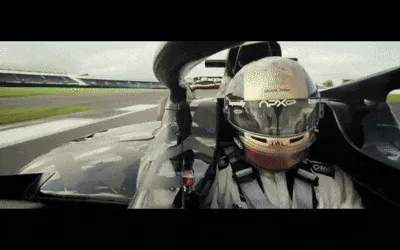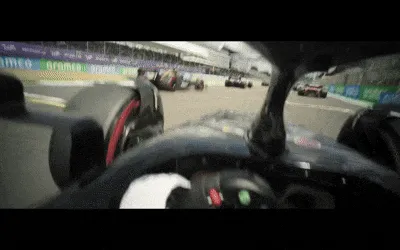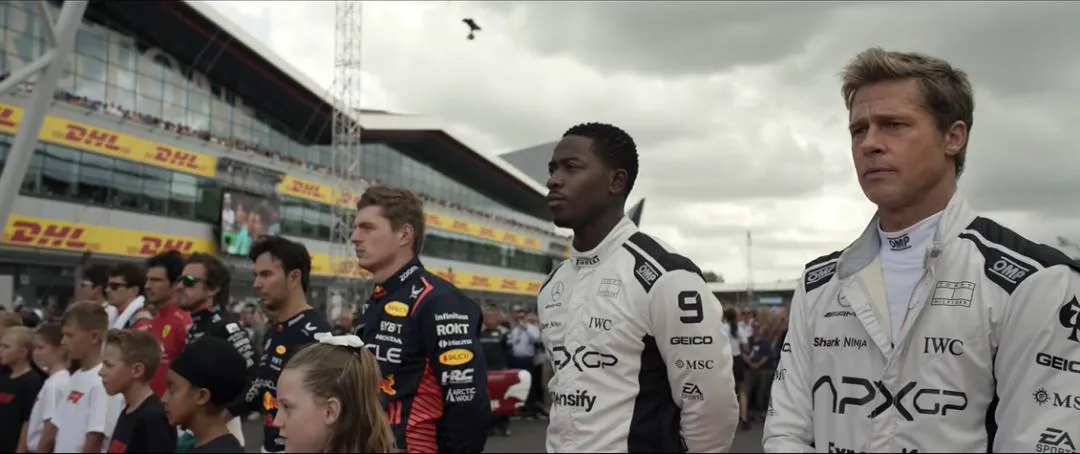Hollywood is currently dominating theaters with a lineup that includes “How to Train Your Dragon: The Hidden World,” “Mission: Impossible 8,” “Lilo & Stitch,” and “John Wick Presents: Ballerina.”
And now, the most powerful contender has just taken its place.
Earning an impressive 8.5 rating.
Because sometimes, pure, unadulterated fun is all that matters.
F1: The Movie - A Thrilling Ride
Initial Thoughts
Let’s cut to the chase: this is a cinematic experience you absolutely need to have in a theater.
And if possible, make it an IMAX showing.
The reason is simple: it’s an absolutely exhilarating spectacle!
With a budget of $300 million, real-track filming, seven-time champion Lewis Hamilton as a co-producer and technical advisor, and Hans Zimmer composing the score, “F1” transforms into a complete audio-visual feast.
This thrill comes in three layers.
Layer 1: Raw, Unfiltered Immersion
The first, and most immediate, layer is the overwhelming sense of being there.
Need for speed? Check.
Adrenaline-pumping action? You got it.
Intense rivalries? Absolutely.
Spectacular crashes? Plenty.

Moreover, IMAX brings every authentic detail of the race to life before your eyes.
The expanded dynamic range transforms your perception of the race from a single car to the entire track.
Previously, on television, you’d focus on the drivers, the cars, or the sky.
Now, you can take it all in.

When filming the drivers, the extensive use of in-cockpit POV shots throws you right into the driver’s seat, experiencing the chaos of the race firsthand.
There are moments when you feel like you’re sitting on the protagonist’s lap, watching the race unfold.

When filming the cars, the driver’s perspective puts your eyes directly on the track.
The vibrations of the car at high speeds and the air currents generated by the engine at full throttle are crystal clear.
The overtaking and battling processes are also unfiltered.
Moreover, there are absolutely no slow-motion shots to detract from the excitement; it’s all about speed.
When filming the details, you might think a pit stop would offer a moment to catch your breath?
Think again.
During a pit stop, tires need to be changed in a matter of seconds.
The first time, nine seconds – too slow.
The Ferrari team next door manages 5.8 seconds – still too slow.
Only under three seconds is considered acceptable.
While the drivers are speeding on the track, the tire changers are also improving their performance off the track.
When another pit stop arrives, with quick cuts and edits, all steps are completed in under three seconds, and the engine roars back to life with a thousand horsepower.
Our breath is taken away, and our passion is unleashed.
Layer 2: The Essence of Teamwork
The second layer of thrill is the team dynamic.
Racing is never just the effort of a single driver.
Behind them is the collective effort of an entire strategy team and technical crew.
“F1” doesn’t just focus on the drivers on the track.
Instead, it spends a significant amount of time in the pit lane, showing how the drivers and team collaborate, how they tune the cars, and how they quickly respond to the driver’s needs.
During the race, the off-track excitement is just as intense as the on-track action.
For example, imagine you’re Brad Pitt’s strategist.
The strategy you provide him is the most suitable tire plan: use hard tires for stability.
He stubbornly demands to switch to soft tires for faster pursuit.
And, without warning, he drives into the pit lane and refuses to leave.
What do you do?
Do you trust your team’s strategy, or do you trust this old gambler who hasn’t driven an F1 car in thirty years?
Trust me, when you try to view the race from the perspective of the support team, the thrill is completely different from the on-track battles.
From the driver’s perspective, you enjoy the speed and reckless pursuit.
From the team’s perspective, you enjoy the close collaboration and the enduring team spirit.
Layer 3: A Treat for F1 Fans
The third layer is a special treat for F1 fans.
Take this scene, for example.

During filming, the two actors were actually standing next to the driver’s team, but the race broadcast omitted their presence.
Imagine, as a fan, watching Brad Pitt battle with Magnussen, chase Verstappen, and stand on the podium with Leclerc – it creates a surreal feeling.
Moreover, the writers clearly understand the various iconic moments in real F1.
For fans familiar with F1, it’s like a series of Easter eggs.
Without giving away any spoilers, here’s just one example.
During the Hungarian Grand Prix, right after the start, the protagonist witnesses two cars colliding and flying off the track right in front of him.
In reality, this is exactly what happened to the Alpine team in the 2023 F1 season at the Hungarian Grand Prix, with both cars retiring.
The perspective remains unchanged, directly using the onboard camera view of Chinese driver Zhou Guanyu.
This pleasing and effortless design adds to the immersive experience.
With this layered excitement, whether you’re a complete novice, a newcomer, or a seasoned fan, you can find your place.
And it’s not a case of the more you know, the more you enjoy.
After all, when the roar of the race car engine explodes on the IMAX screen, we all feel the same heart-pounding thrill.
The Story Beyond the Spectacle
Now, let’s talk about the drama and plot design.
In my opinion, the drama in “F1: The Movie” is well-executed.
This isn’t because the plot is particularly clever or the dialogue is moving, but because it doesn’t overshadow the main event.
Sonny Hayes (Brad Pitt), a former prodigy, hasn’t driven an F1 car in thirty years. Besides being fast, he’s terrible in every other aspect.
Joshua Pearce (Damson Idris), the current prodigy, is arrogant and inexperienced in real F1, already indulging in the glamorous world.
Their team, Apex Grand Prix, is losing money and facing a potential sale. Only a race victory can give them a breather.
Frankly, we’ve seen this setup countless times in sports movies.
Director Joseph Kosinski’s previous well-received film was “Top Gun: Maverick.”
After watching “F1,” it does feel like watching a racing version of “Top Gun 2.”
The same skilled old man, the same powerful/wealthy friend, the same old-meets-new dynamic, the same impossible mission.
An unruly maverick, a team and friend waiting to be saved, a junior needing guidance, a female director who is tough on the outside but secretly smitten…
It’s all pure Hollywood individualism.
Moreover, the details in “F1” are quite well-handled.
For example, Sonny, as a talented driver who retired from F1 thirty years ago due to a car accident, naturally carries hidden pain.
Throughout the first half of the film, the camera occasionally focuses on his scars, hinting that his injuries will resurface at some point.
Sure enough, in the final race, Sonny’s injuries flare up, pushing him to his physical limit before the finish line.
Also, Sonny is a gambler who is used to driving in various racing events.
He initially trusts only himself and can even defy the team’s orders.
But as the races progress, his gambling doesn’t always succeed.
The team’s progress also makes him increasingly trust his teammates and the data, and he begins to truly explain his intentions to the team.
The scenes of Sonny running and training evolve from running alone by the lake at headquarters to training with the team before the race, and finally, after his injury, Joshua leads the team in a run.
The team spirit and chemistry are concisely displayed in these scenes.
So, in the end, Joshua can voluntarily sacrifice himself, using a crash to bring out a red flag, giving Sonny the chance to complete the final lap.
Frankly, the plot arrangement isn’t bad.
It has all the necessary elements, and the two protagonists are well-developed.
It’s just very formulaic. If you’ve seen a few Hollywood inspirational sports movies, you can probably predict the turning points in the relationship between Sonny and Joshua, or how their mutual growth will unfold.
It’s like a pre-made meal that’s neither good nor bad. You know what it tastes like, and you’ve had it countless times before.
Eating it again brings that familiar feeling, even a sense of comfort.
The Importance of Character
Don’t get me wrong, I’m not saying that drama isn’t important in sports movies.
On the contrary, good sports films can make the characters more complete and their actions more believable through the refinement of the drama.
For example, one of my favorite racing movies is “Rush.”
Racer Niki Lauda is disfigured in a serious car accident and has to recover in the hospital, while he is competing for the championship with his rival James Hunt.
He wants to return to the track, but recovery takes time.
So, he fully cooperates with the doctors, even if it means suffering, as long as it speeds up his recovery.
As soon as the wounds on his face heal, still with terrible scars and scabs, Niki can’t wait to put on his helmet.
Even though it causes him immense pain.
Because for him, the physical pain is enough, he needs racing, it’s his mental support.
Returning to the track means he is no longer seen as a dying patient, but as the racer who is always striving for victory.
The more intense the pain, the more glorious the victory.
Lauda’s image of not fearing pain and pursuing speed is completely established.
And “F1” lacks such scenes.
Sonny and Joshua’s recovery after the accidents is only briefly mentioned, and the injuries seem like minor incidents.
But, this doesn’t stop me from recommending everyone who is interested in racing to watch “F1” in theaters.
Ultimately, the evaluation of “F1” depends on how we position it.
It is essentially a large advertisement co-produced by the F1 organization and Apple.
The goal is to use top-notch audio-visual effects to shock moviegoers, thereby quickly generating interest in F1 racing and attracting them to become fans.
Therefore, the drama is naturally just enough to serve its purpose.
As long as it clearly explains the characters’ basic settings, motivations, and relationships, it’s sufficient.
After all, when this title is released, most people are going to see the 1:1 recreation of the F1 track on the big screen.
When fans see Hamilton trying his best but still unable to stop Sonny, just like the mirrored replica of the 2021 Abu Dhabi Grand Prix.
When non-fans see Sonny nearing his physical limit in the cockpit during the final lap, the engine roaring and then fading, and finally crossing the finish line to win his first championship as a returning hero.
The significance of “F1: The Movie” as an audio-visual spectacle is already enough.
Returning to the initial question.
Is the Hollywood assembly line of industrial blockbusters back?
I don’t think we can draw a conclusion yet.
What’s encouraging is that the current batch of blockbusters, while not all excellent, have at least achieved one thing.
Meeting the audience’s expectations.
Because there are already too many movies that don’t tell stories well, making simple themes incredibly complex.
Whether it’s Disney’s remakes that keep failing, Marvel’s quagmire-like Phase Four, or the long-dead DCEU.
They all seem to be completely unaware of what the audience wants to see in their IPs.
So, we see “Snow White” with political correctness outweighing fairy tale purity.
“Captain America 4” exhausting all patience with its bland plot.
“Joker 2” deconstructing the Joker’s image with its formulaic use of anti-heroes and superhero deaths.
Do they really not know what the audience wants to see when they buy tickets?
No, it’s just arrogance, the arrogance and laziness of the creators.
The audience’s demands are simple.
Action movies should focus on action.
Romance movies should focus on romance.
Sports movies should focus on sports.
Only after meeting the audience’s basic expectations for the content of the movie should we discuss whether to add new expressions from the creators on top of the basic content.
This is not only respect for the audience but also respect for the commercial market.
After all, the original intention of making commercial movies is to make money, not to go against the audience in the theater.
And “F1: The Movie” has achieved this.
It knows its position, understands the audience’s preferences, and never tries to surpass their preferences.
After all.
In today’s world where everything is uniquely bad.
Being able to comfortably enjoy a visual feast.
Without missteps or reservations.